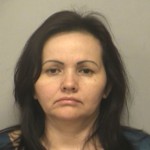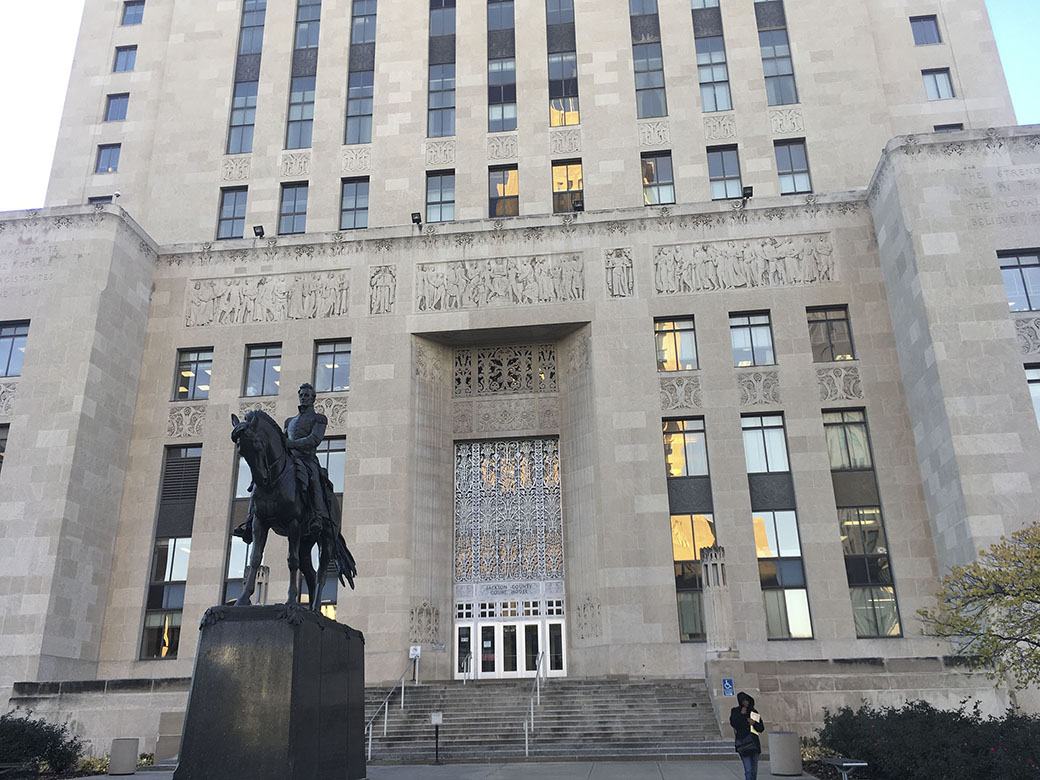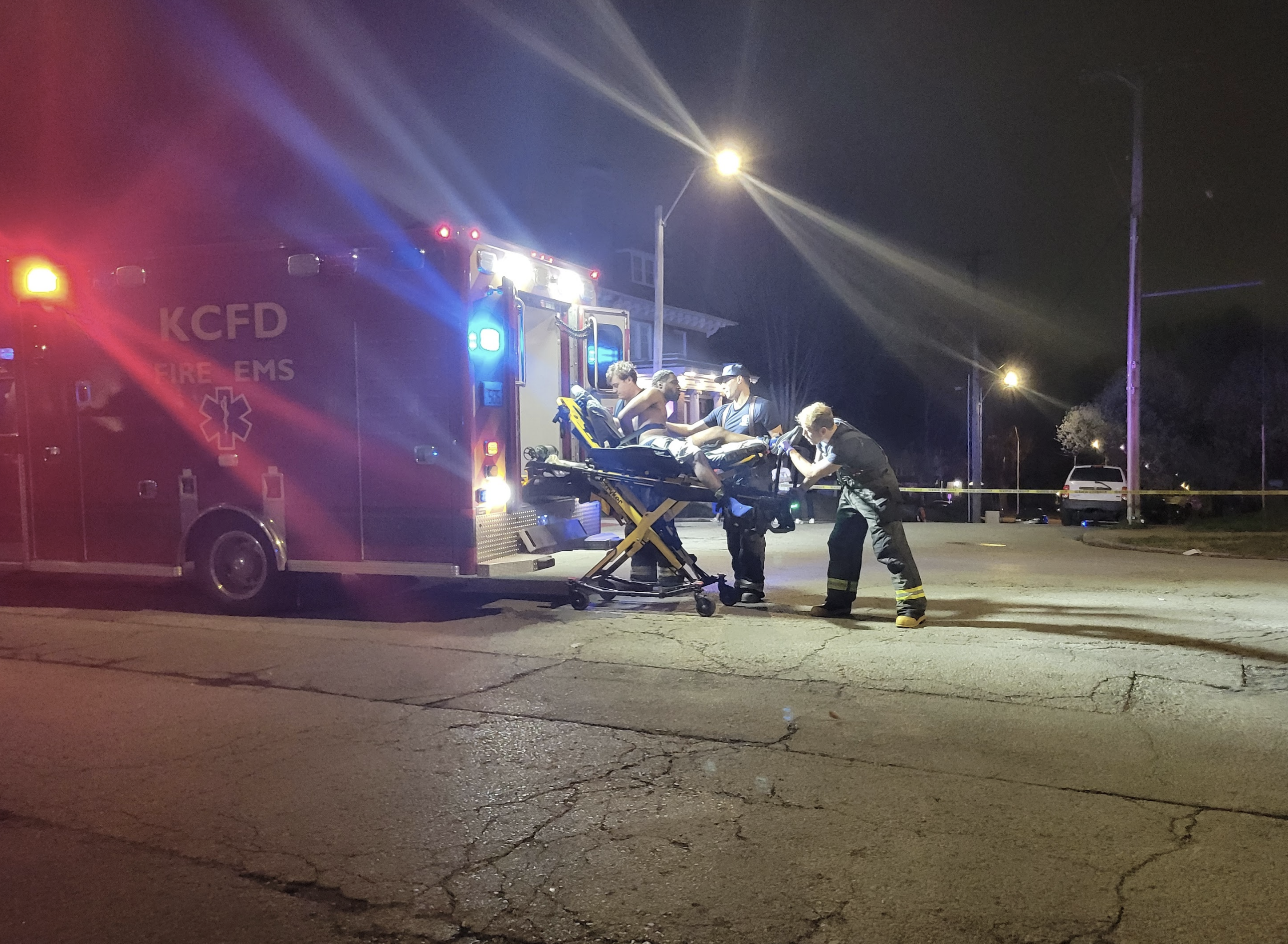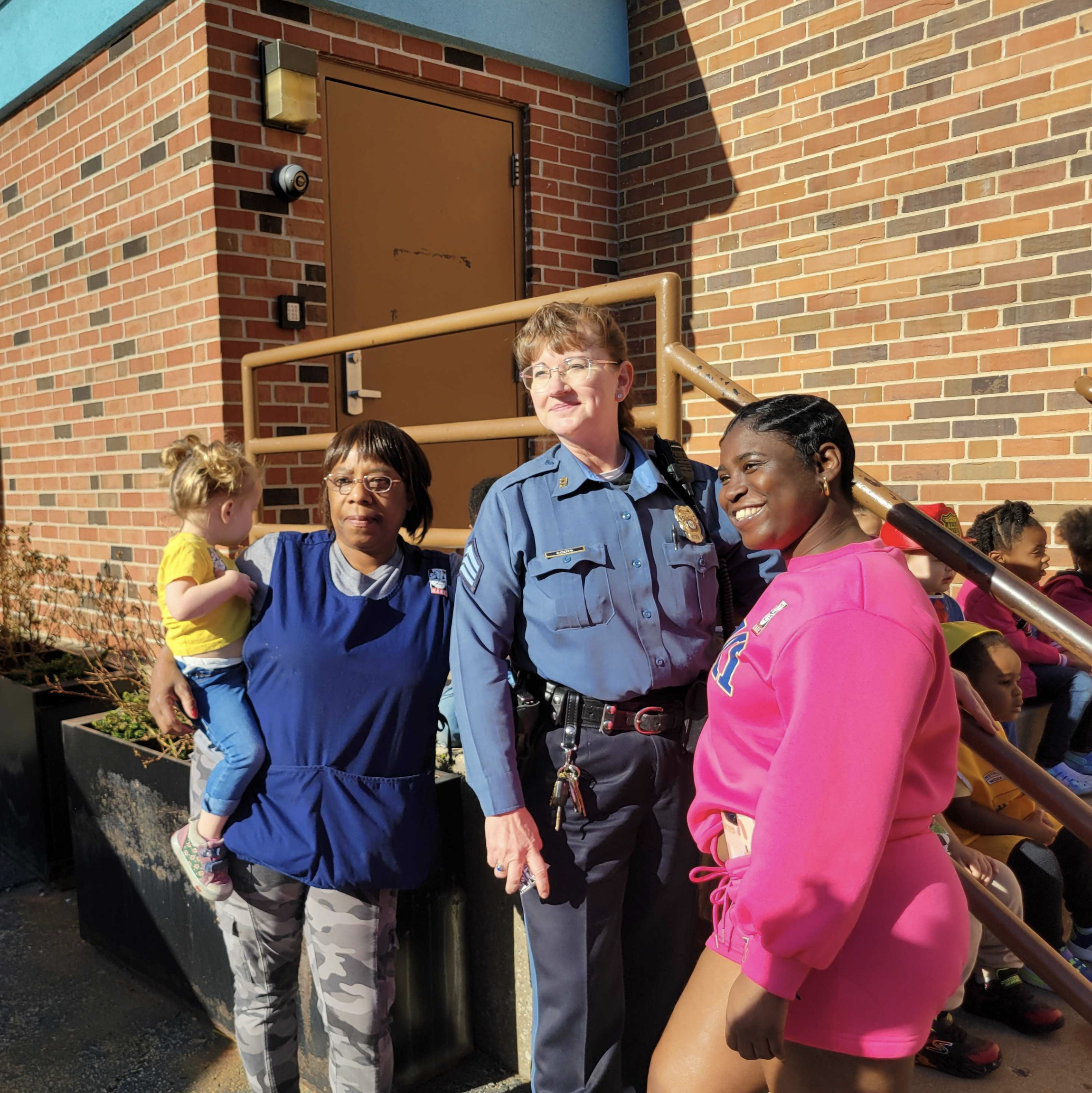By Paul Thompson
Northeast News
The long-awaited bench trial of Thu Hong Nguyen on charges of First Degree Arson and 2nd Degree Murder continued into a second day on Tuesday, July 17.
The prosecution alleges that a deadly fire was started in a nail salon supply closet by Thu Hong Nguyen just after 7 p.m. on October 12, 2015, right before she closed up shop for the night. The blaze, which began on the ground floor of a mixed-use, three-story apartment complex, claimed the lives of Kansas City firefighters John Mesh and Larry Leggio. The firefighters died when a brick wall collapsed upon them while working the scene.
Witnesses called before Judge Joel P. Fahnestock in Division 9 of the 16th Circuit Court of Jackson County included Alcohol Tobacco and Firearms (ATF) fire protection engineer Adam St. John, former ATF engineer Michael Keller, ATF senior forensic auditor Nicole Nguyen-Murley and FBI special agent Ryan Williams, who specializes in cell tower analysis.
St. John testified about lab testing he conducted that involved characterizing the ignition, flame spread and heat release rate for two chemicals known to be in the nail salon at the time of the fire: isopropyl alcohol and acetone. According to St. John, the testing showed that the fire was capable of spreading rapidly and could have ignited other materials.
Defense attorney Molly Hastings, however, argued that no firefighter ever made entry into the back of the nail salon on the night of the deadly fire, though she noted that they did enter other stores, as well as the second and third floor of the building. She further argued that a video of the fire shows no discernible smoke coming from the nail salon, which throws doubt on the theory that the fire originated in the nail salon’s supply closet.
St. John had concluded previously, however, that the origin of the fire was obscured from the street because the neighboring business had more flammable material near the front of the store. St. John also noted that KCFD thermal cameras registered an extreme heat signature coming from the back of the nail salon.
The prosecution’s second witness, engineer Michael Keller, elaborated on how the fire might have spread throughout the building without engulfing the nail salon. According Keller’s testimony, if flammable liquid had been densely concentrated in the salon’s supply closet, the flames were most likely to build upwards towards the ceiling, rather than laterally. In Keller’s scenario, the flames would begin engulfing the building from the void space between the first and second floor.
Keller was at the scene of the fire, where his initial task was to ensure the safety of the premises and provide assistance with electrical issues. According to Keller, each individual item from the building was examined by trained ATF personnel, looking for evidence of electrical failure. Ultimately, Keller ruled out the possibility of an electrical fire.
“The emphasis here is that literally thousands of items were looked at,” Keller testified.
According to Keller, smart electrical meters provided the prosecution with important details about the deadly fire. Though the exterior meters were damaged by falling bricks, they remained unharmed by the fire itself and maintained the capability to download data.
The recovery of the smart meter data allowed Keller to investigate power levels from within the building in 15-minute intervals. In practice, the data helped Keller identify the speed at which the fire enveloped the building by tracking when the interior panel boxes tripped, cutting power to various portions of the structure in the process. Between 7:00 p.m. and 7:15 p.m. on October 12, 2015, the fire began hitting power sensors. Keller testified that 13 of the 16 units in the structure had working smart meters attached, and that 11 of the 13 had gone to zero power by 7:17 p.m. By 7:45 p.m. at the latest, all of the power in the building had been shut off.
One of the items of concern for Keller was that the nail salon is alleged to be the origin of the fire, but it’s power is not one of the first to go offline. The reason, according to Keller, is that the fire first reached the ceiling of the nail salon, before spreading into the void space between floors. Once above the salon, Keller testified, both the ceiling and a sheet rock wall protected the panel box that was located next to the supply closet, which at least temporarily allowed power to remain on in the business that was the source of the fire.
Keller’s testimony led to the most contentious interaction of the trial’s second day, as Hastings worked to establish that the building, constructed in 1947, had a history of electrical issues. She cited one tenant who described an outlet that would spark and smoke when something was plugged into it, and indicated that the building has failed 10 of the past 15 inspections administered by a fire marshal.
According to Hastings, there is photo evidence that an open sign remained lit in the salon until 7:25 p.m. on the night of the fire, and that it was the very last business in the building to lose power. Keller concurred that the electricity in the nail salon went out after the electricity in the apartments above, though he pushed back strongly when Hasting suggested that it would be logical for the fire to have shut off the nail salon’s power first, had the fire’s origin indeed been the supply closet.
Keller noted that the sheet rock wall that separated the supply closet from the panel box is designed to be fire retardant, which could have shielded the power supply from the neighboring flames.
Hastings worked to cast doubt on the Keller’s theory.
“I would suggest that there is enough fuel to blast through this sheet rock wall,” she said. “One alternative reason that the light could have stayed on longest in the building, just one possible alternative, could be that maybe the area of origin was not in that closet.”
Keller’s testimony was followed by that of ATF senior forensic auditor Nicole Nguyen-Murley, who served as an interpreter for Thu Hong Nguyen when the defendant was interviewed about the deadly fire on October 26, 2015.
On July 17, Nguyen-Murley was led through a transcript of the interview, with the prosecution highlighting the conflicting statements provided by the defendant. For instance, Nguyen initially suggested that she doesn’t know how to use credit cards and doesn’t have a bank account, only to concede later that she used to have a credit card until her ex-husband destroyed her credit score.
Nguyen also indicated during the interview that she was merely an employee and that the nail salon was owned by her boyfriend Nhat Pham. Later, she suggested that she ran the business as an owner and paid $10,000 for a stake in it.

She initially told authorities that she was a simple woman who wasn’t plugged into the financial aspect of the nail salon, and that she subsisted on $250 in food stamps, $200 in monthly childly support, and what she earned as an employee of the business. Later, she revealed that she actually took home the cash portion of the business’s sales, while Pham collected the credit card revenue.
Despite her suggestion that she spoke little English, Nguyen-Murley testified on July 17 that the defendant spoke English at various points throughout the interview, including during the entire second half as Nguyen-Murley watched from a monitor.
That proved to be a point of contention for Hastings, who questioned Nguyen-Murley about why she would leave the interview. Hastings pointed to a portion of the transcript where Nguyen indicated that she needed an interpreter. Hastings cited the incident as an indication that her client was having trouble communicating.
When Nguyen asked again for a translator, the lead investigator called her out; saying that her English is strong enough to speak without an interpreter. In a strange development, Hastings also pressed Nguyen-Hurley to acknowledge that the six and a half hour interview ended with Nguyen vomiting.
Hastings asserted that the interview was aggressive, especially considering that Nguyen-Murley stated at the beginning of her testimony that the defendant was not yet a suspect at the time. Hastings pointed to an entire passage that shows Nguyen-Murley talking to the defendant in Vietnamese.
“Stop talking, cut it off, this is going to take a long time,” Nguyen-Murley said, according to the transcript. “If you want to go home with your kids, just tell me the truth.”
Nguyen replied: “I just told you the truth.”
Prosecutors, meanwhile, focused on Nguyen’s inconsistencies and suspicious behavior. For instance, she acknowledged that she bought between $400 and $500 of flammable beauty supplies on or around the same day as the fire. Nguyen also told authorities during her interview that Pham helped her close the shop on the night of the fire, though by that time investigators had determined that Pham’s phone had been pinged at Argosy Casino while Nguyen was closing up the business.
The final witness of the day, FBI agent Williams, laid out how exactly investigators were able to determine the whereabouts of both Pham and Nguyen on the evening of October 12, 2015. Williams is a member of the FBI’s Cellular Analysis Survey Team (CAST), a group of 60 agents and task force officers that specializes in deciphering cell phone records.
Williams was part of the team that monitored the cell phone records of Pham and Nguyen. According to Williams, those records show a flurry of activity between the pair from 7:40 p.m. to 8:10 p.m. – the hour following the fire – on October 12, 2015. During this time, Nguyen initially told authorities that she and Pham were together, but Williams’ testimony proved otherwise.
Nguyen’s phone does indeed ping in the area surrounding the nail salon, and later in the vicinity of her home on St. John Avenue. At the same times, however, Pham’s phone registered at a Burger King in North Kansas City. His phone later pinged at Argosy Casino, and only well after 8 p.m. did the phone return to the Historic Northeast.
Pham was allegedly with another girlfriend when the fire occurred. That individual submitted testimony approved by both the prosecution and defense that corroborates the prosecution’s version of events, including time spent at Argosy Casino and the Burger King location in the Northland, where the witness acknowledged that Pham had dropped her off at her car.
She added that at one point, Pham took a telephone call, during which she claims to have heard a deep male voice say that the nail salon was on fire.
Tune back in throughout the week for more dispatches from the trial of Thu Hong Nguyen.



















